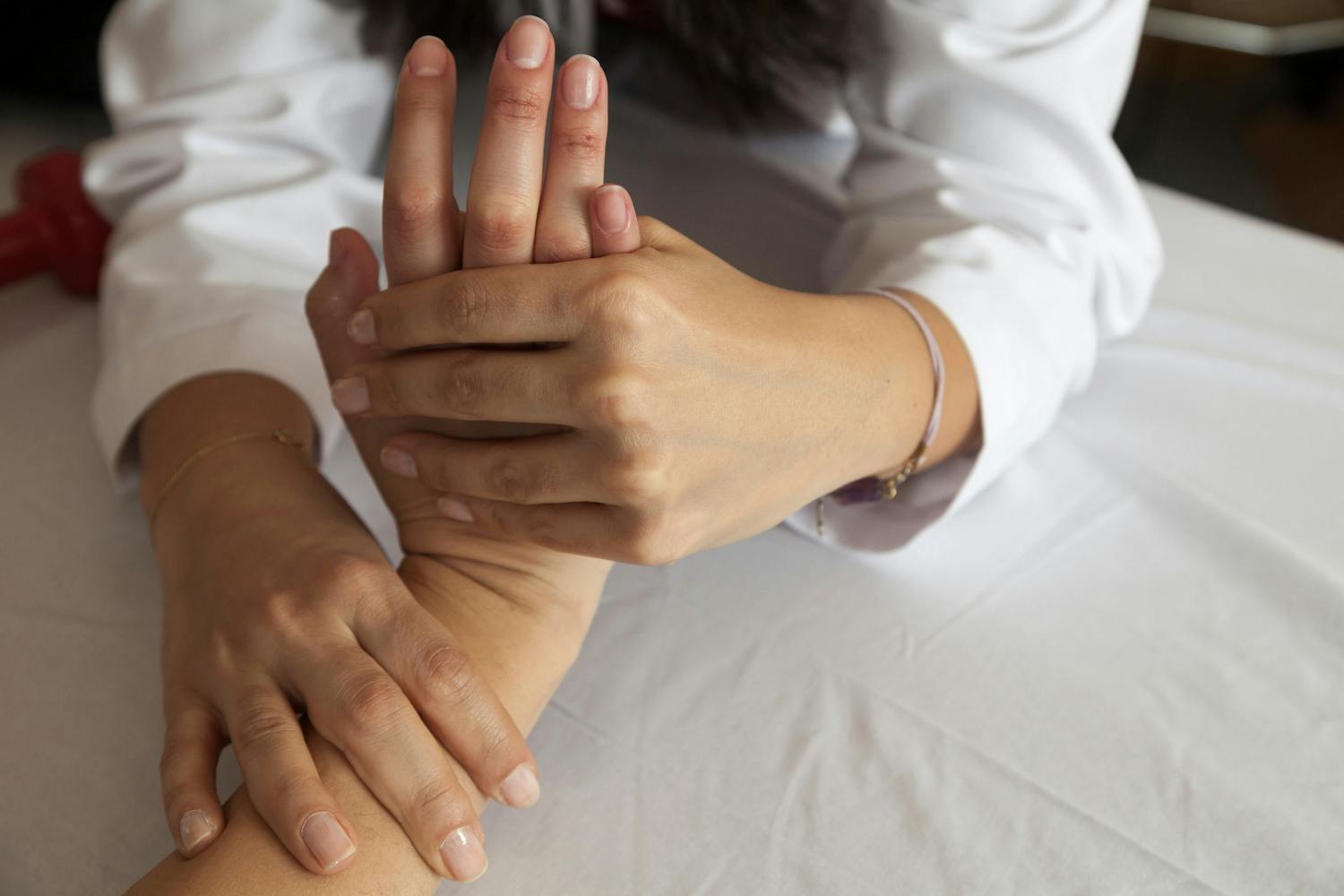- Blog
Hand Therapy 101
Posted on 12-22-2025 in Wrist, occupational therapy, Finger, Hand, Elbow & hand therapy by Dr. Steven Kronlage

Posted on 12-22-2025 in Wrist, occupational therapy, Finger, Hand, Elbow & hand therapy by Dr. Steven Kronlage
As a subset of occupational therapy, hand therapy plays a significant role in treating and improving patient outcomes related to acute and chronic conditions of the hand, wrist, elbow and shoulder. At North Florida Bone & Joint Specialists, our Certified Hand Therapists (CHTs) are board-certified in occupational therapy with an added qualification in Hand Therapy. Working with a CHT can have several benefits, including:
Our CHTs work collaboratively with our fellowship-trained surgeons, Dr. Steven Kronlage, Dr. Alex Coleman and Dr. James Piorkowski, to develop comprehensive treatment plans for patients with arthritis, congenital differences, tendonitis, neuropathies, palsies and other conditions. They also work with patients recovering from nerve repair and injuries such as tendon ruptures, ligament instability, wounds, lacerations, fractures, crush or other trauma-related injuries, and those sustained while participating in sports or on the job.
The intake process begins with reviewing your medical history and evaluating your physical demands at home and work, as well as those required for leisure activities or your role as a caregiver. Range of motion, strength and sensory testing, and observing the performance of functional tasks may also be included in the initial evaluation process. Our CHTs will also discuss your treatment goals to ensure realistic outcomes, such as safely performing daily tasks at home or returning to athletics. A comprehensive plan of care may include a combination of the following:
If you currently suffer from an injury or condition of your hand, wrist, elbow or shoulder that may benefit from occupational therapy with one of our Certified Hand Therapists at North Florida Bone & Joint Specialists, please contact our office at 850-807-4200 or complete our online Appointment Request Form to schedule a visit with one of our Hand Center Physicians.

May is Arthritis Awareness Month, an opportunity to increase public understanding of arthritis and its impact on millions of lives. Established by the Arthritis Foundation, this national observance highlights the importance of early diagnosis, effective treatment, and ongoing research to improve the quality of life for those with arthritis.

With summer in full swing and children taking advantage of more time to participate in sports-related or other outdoor activities, it’s essential to be mindful of injury prevention while encouraging their interest in activities that don’t involve screen time!

May is National Arthritis Awareness Month, and of the more than 100 forms of this painful condition, many can affect the ankle. In fact, almost half of people in their 60s and 70s have arthritis of the foot and/or ankle, but not all of them have symptoms.